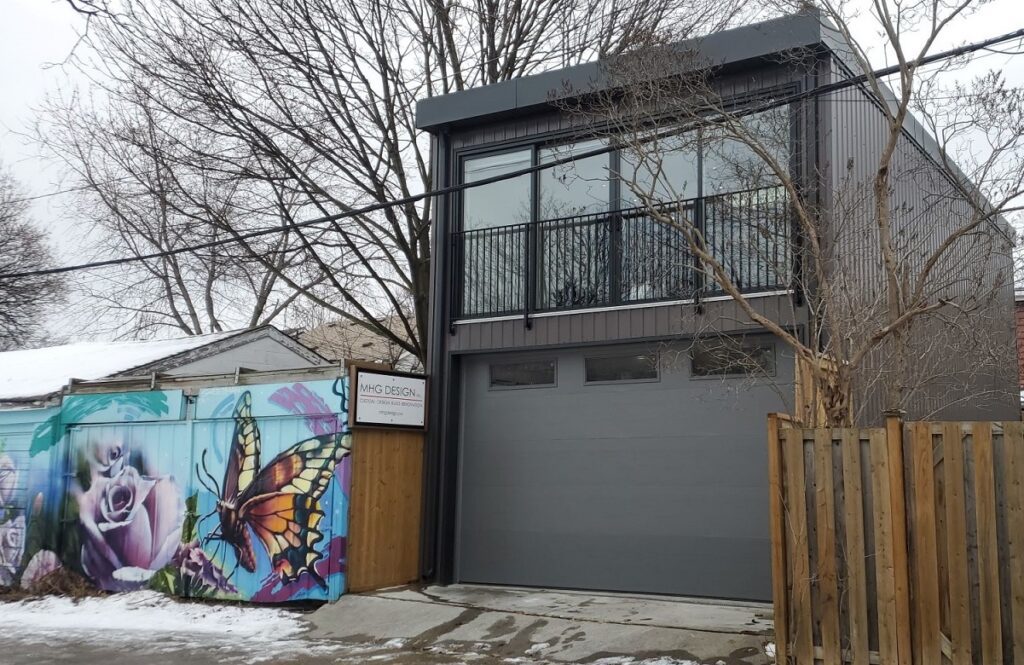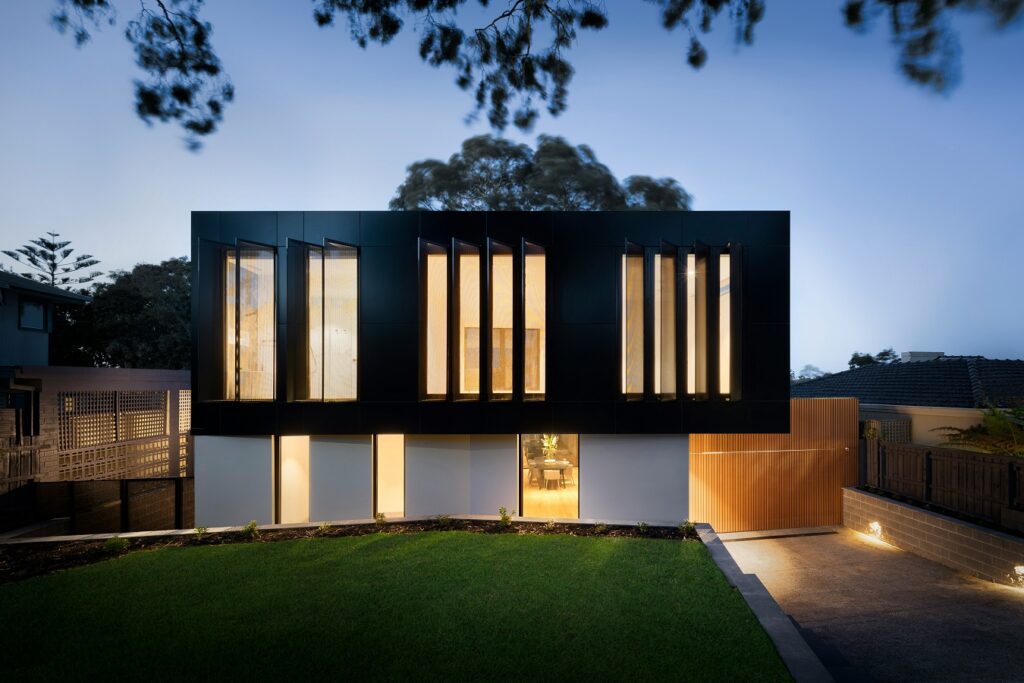You know the expression, “Good things come to those that wait”?
There couldn’t possibly be a more incorrect way to describe being a buyer in the 2017 Toronto real estate market.
Those that wait either end up paying more for a semi than they could have paid for a detached a year earlier, or get priced out of the market entirely.
Waiting intentionally gets you nowhere. But once in a while, you get somewhere after a while, by complete fluke…
What is marijuana anyways?
And why is it illegal?
We Canadians think it’s insane that our neighbours south of the border give out jail time for possession of a gram of herb, but they can walk a loaded handgun through a school gym class…
I think that if the U.S. government was able to regulate, and tax, the sale of marijuana, it would be a no-brainer.
Same goes for Canada. I never met a Liberal government that didn’t love a tax! Figure out how to profit from it, and the Liberals will make possession of marijuana legal.
In 2006, I went on a journey with my father and my brother, that saw us climb to Base Camp at Mount Everest, but then take a short side-trip to Bhutan.
I had never even heard of Bhutan until my Dad told us we were going.
I’ll never forget, driving from the airport (which was the size of your house) to the hotel, and you could see fields of marijuana from the window.
I’m not joking.
I’ve just gone into my archives, check this out – this is the view from where we pulled the car over:

Gorgeous, eh?
And then this is what was at our feet:

There are literally fields of marijuana, growing in the wild.
Our guide told us that it grows “like a weed.”
Hence one of the many reasons why it’s referred to as “weed.”
It seemed to come in all different shapes, sizes, and colours.
That classic light-green look above, and then something like this below, which shows the typical light-green leaves, but on a redwood stem that you’d expect to find on a maple tree:

We took hundreds of photos of wild marijuana on this trip.
Our guide kept asking us, “What is the fascination with this weed?”
We told him that back home, it was like a currency. It had value.
He said, “It’s illegal to own it here.”
That made no sense! It was growing wild everywhere, but it was illegal to own it? And what was the value like, given it was readily available in fields as far as the eye could see?
“It has no magic powers, like yours back home. It does not make you feel good.”
He went on to tell us all about the male and female marijuanas, how they’re born, how they grow, what metabolites they contained, etc.
For a guy that didn’t use it, didn’t own it, and claimed it was illegal to possess it, our guide sure knew a lot about it!
On Monday, I told you the story of my buyer clients, Duncan and Amanda, who were having a tough time finding a home that suited their needs, and was within their price range (like every buyer out there), but who stumbled upon a house that was priced like we were in the spring of 2014, only to find out that it was used as a marijuana grow-op thirteen years earlier.
When we left off, I told you that we had decided to make an offer.
And we did.
Our offer was conditional on financing and home inspection, since we needed to know if there was anything wrong with this house, but more importantly, we needed to know if a lender out there would finance it!
I knew it was a long shot, but it was a shot I was willing to take.
I don’t generally seek out the near-possible, but I have faith in my “team.”
I often tell my clients that I have spent 13 years surrounding myself with people who I know and trust. My mortgage broker, home inspector, lawyer, stager, painter – if you need it, I have a guy or a gal for it.
And I knew that while most buyers wouldn’t want to own a “former grow-op,” and most agents would tell the buyers it’s impossible to finance, this was a situation we could use to our advantage.
As I said on Monday, this house was listed at $800,000, but was worth, in my opinion, well in excess of $900,000.
We didn’t waste any time with the offer – we made it an hour after seeing the house, threw the full $800,000 list price at them, and gave them until midnight.
We could have tried to work the price down under $800,000, but it was simply a risk-reward equation that we didn’t like.
I had no doubt that somebody else could try to buy this house. They could outbid us, and tie it up conditionally, but they would never get financing. So I wasn’t afraid of losing the house, but I was afraid of the house being tied up for two weeks.
The house had also just been reduced by $50,000 that afternoon. Now would be the least likely time for the seller to negotiate.
So while we could have tried to get the house for $790,000 or $795,000, we couldn’t have put the midnight gun to their head, and I thought another offer would come in by the next day.
We bought the property, conditionally, and yet there was still a hint of excitement in the air.
I called Duncan to tell him, and he laughed. Hard. The classic Duncan-cackle that I’ve been hearing since 1985.
“Dave, one day we’re gonna be sitting around like two old men, and you’ll say, ‘Hey man, remember the time I sold you that grow-op?'”
At least we could laugh about it! We had a tall order ahead of us.
And we were setting ourselves up for disappointment too.
We had a 1% chance of getting this deal firmed up, and we knew that.
I asked my mortgage broker well in advance if we could get financing on a former grow-op, and he said, “Next to impossible.”
Everybody in my office thought I was nuts.
But we got the ball rolling, and booked a home inspection for two days later.
I only use Gordon Mathieu from Carson Dunlop. He is, in my opinion, the most knowledgeable inspector working in the city today. I’ve probably used Gordon a hundred times, and I trust him emphatically.
When Gordon likes something, he’ll glow about it. And when Gordon doesn’t like something, he takes it personally. It’s like every house out there, is his own.
We spent three hours at the house, and Gordon was raving about it. Not only did we find absolutely no evidence of mold, water damage, or basically anything wrong with this house (other than the 35-year-old furnace), but Gordon pointed out many of the super-adequacies, or features of the home that were built above and beyond the building code, or how it’s done today.
“The way it’s built” changes with the years, whether it’s the style, the aesthetic, or the materials. Look at some of the detail in the beautiful old buildings in downtown Toronto, and then look at the glass towers we see today.
Gordon pointed out many of the features of the home that were built better in the late-1970’s than they are today.
Overall, he loved the house. The report checked out, and we even added the thermal imaging (which few people do), just to be safe.
The sellers had done an Indoor Air Quality Inspection Report through EnviroSolve Canada – a 22-page report, which concluded that there were was no hidden mold growth within the wall or ceiling cavities of the home that were affecting indoor air quality.
Armed with these two important pieces of evidence, it was time to approach the lenders.
Just for good measure, however, I added a third bit of data, which I simply called logic.
I drafted an email that I knew my mortgage broker would forward to the lenders, which laid out the nuts and bolts.
The house, as I explained, was not a “former grow-op.” It was a “former, former grow-op.”
The house was used as a grow-op for a few months back in 2002. That was it.
The house was now inhabited by a family of four, who had been living here for thirteen years with no issues.
The basement, which is where the plants were grown, was completely gutted and renovated in 2003.
So was this really a “former grow-op?” Was it really a concern?
Or was this just stigma on paper?
As somebody pointed out in the comments section on Monday, any sigma like this must be disclosed forever. When my clients go to sell in 20-30 years, they’ll have to disclose this too.
So while the fact that this house was used as a grow-op in 2002-2003 had to be disclosed out of necessity, was it really applicable or important in 2017? Or was it just a formality?
We started going to the lenders, and we got shot down left, right, and centre.
The bank that held the current mortgage, turned us down, which was shocking.
Imagine that! The very bank that currently holds a mortgage on the property, won’t lend us the money. Does that make sense to you?
The owners got a mortgage in 2003, renewed in 2008, and renewed again in 2013 – all three times, with no problems.
Now we were talking to the same lender, a Big-5 Bank, who was saying, “no.”
We talked to Big-5 Banks, credit unions, and monolines, but nobody wanted to touch it.
Then one credit union said they would lend, as a favour to my broker, but they wanted the following:
-2003 police report
-2003 mold remediation report
-2003 re-entry certificate
-2003 environmental study
-2017 home inspection
-2017 air quality report
-2017 environmental study
-2017 appraisal
And I think that was it. Wait…..there might have been one or two other things.
But overall, the list was exhaustive.
And as I soon found out, there was no 2003 mold remediation report, since no mold was found, and none was remediated! There was no 2003 re-entry certificate issued, since this house wasn’t condemned or shut down by the police. There was no 2003 environmental study.
This “grow-op” wasn’t much of a grow-op after all. It was small-scale, short-lived, and made no impact on the house.
But the credit union wanted what they wanted, and we couldn’t get financing without it.
Now as you would probably assume from the tone of my story, and from the title of my blog, we did get financing on this property eventually.
Can you guess where we got it from?
A credit union?
A monoline?
An underground lender?
Nope.
We got financing from a Big-5 Bank.
I won’t say which one, just as I won’t name the bank that holds the current mortgage and turned us down.
But it wasn’t some fly-by-night, and it wasn’t a lender you’ve never heard of. In the end, it was a bank you know and trust.
And it was 100% due to my mortgage broker’s relationship with the underwriter.
Some of the lenders told us, “We’ll do 10,000 mortgages this year; we don’t need to do 10,001.” They saw this simply as a deal they wouldn’t touch, because of the stigma.
But the underwriter and the Big-5 bank we went to, knew my mortgage broker, and listened when he framed this deal as one that was just as good as any, if not better. The clients had 35% down, their mortgage application was top-notch, and they were brilliantly qualified. So what if the MLS listing had the words “grow-op” next to the date “2002.” We had enough to refute that, and more.
My mortgage broker’s relationship with this particular underwriter made this deal, and that’s something that no other broker had up his or her sleeve.
I’m sure somewhere out there, there’s another mortgage broker, with another relationship, with another underwriter, that could have got the deal done
But this was truly 1/100 from the start, and thanks to the people around me, we got it done.
We almost lost the deal at the last minute, however, when the on-the-ground “mortgage specialist,” who worked retail at my buyers’ branch of this Big-5 bank, refused to close his own pre-approval on the buyers. He told my clients, “There’s a rate hold on file, and it can’t be removed for four months. I’m really sorry.”
This would have meant that the underwriter my broker was working with couldn’t have approved the loan on her end, and we’d be without financing.
My mortgage broker sniffed this out quickly. He told my clients, “Put me on the phone with him, please,” and after a 30-second phone call, low-and-behold, the retail-rep said, “Oh, wait, I actually can closet this file, my mistake,” and that was that.
I’m all for getting business, but when somebody shows up at your door and says, “We got a broker to approve a deal that you never could have got approved, we’re going with him,” why try to deliberately get in their way? I’ve heard a lot of bad stories about mortgages and lenders at the retail level lately, but that’s a story for another day.
So there you have it, folks!
My clients bought a $900,000+ house for $800,000. In this crazy market!
Who’d have ever thought?
I can’t wait to be invited over for a summer pool party.
I really, really need to work on my Dad-bod…
































Ralph Cramdown
at 8:51 am
(Puts on black hat)
If stigma worth $100k+ attaches to something as low grade as having a plant or two in the basement, what stops unscrupulous tenants from blackmailing landlords? It wouldn’t be worth the risk if the tenant had no prior criminal record and would lose his white collar job and ability to travel to the US if convicted, but for everybody else, it would seem a VERY effective way of keeping the rent from increasing.
Geoff
at 10:04 am
*WHO* are you renting to?
Kyle
at 10:56 am
Just growing weed in a pot in a home will not land the property on the grow op registry. The home needs to get busted. So wouldn’t the tenant have to report himself to the police (and likely go to jail) if he wanted to carry out his threat? I’d say that is a fate worse than paying market rents.
Ralph Cramdown
at 11:14 am
What is this “grow op registry” you speak of?
Kyle
at 11:47 am
The Police keep a list. Sometimes they publish them (see below), but otherwise you have to ask them if a house is on the list:
http://www.aaron.ca/columns/grow-house-list-toronto-2003-6.pdf
http://www.aaron.ca/columns/York_Region_GrowOps.pdf
http://www.aaron.ca/columns/scarborough%20grow%20ops%20bulletin%20all.pdf
http://www.aaron.ca/columns/2006%20Durham%20GrowOps.pdf
Ralph Cramdown
at 11:57 am
There are a number of places on the Toronto list with fewer than 5 plants — which typically only attracts a fine, rather than jail. I didn’t check the other lists. Good pointers, Kyle.
Kyle
at 5:24 pm
Those places with under 5 plants will be legal soon enough: http://healthycanadians.gc.ca/task-force-marijuana-groupe-etude/framework-cadre/index-eng.php
“The Task Force recommends allowing personal cultivation of cannabis for non-medical purposes with the following conditions:
A limit of four plants per residence
A maximum height limit of 100 cm on the plants
A prohibition on dangerous manufacturing processes
Reasonable security measures to prevent theft and youth access
Oversight and approval by local authorities”
Long Time Realtor
at 4:42 pm
Quite possibly the most inane and incoherent post ever.
Classic_Liberal
at 6:06 pm
Quite possibly the best post ever. Thanks for sharing such an excellent story.
Kyle
at 9:43 am
Congratulations to you and your buyers, lots of extra hoops to jump through but worth it in the end.
Joel
at 11:09 am
I have had lenders say that they don’t have a problem with doing former grow-ops, but they don’t want to be known as the lender that does them. It is interesting as they have the ability to, but can’t have a sizable portion (even 250 of 10,000) of their book be grow ops.
This is the same with condos under 500 sq feet and other oddities that come up.
If they are intending to live in this property as their ‘forever home’ I see it as a great buy to purchase a former grow op. They don’t care about the final value and it may not be a concern in 30 years when they sell. Or as you had mentioned in the last article, they can knock the house down and sever the lot in 30 years and sell to a developer.
Sarah
at 12:47 pm
Joel, That was my question. I’m thinking “great, woo-hoo, you bought a house under market value”… but one day, you’re going to want to sell that same house – which is still stigmatized, and which will still sell for under market value. Sure, it could still appreciate in today’s markets, but what happens if we have this *inevitable* market crash/ correction.
I don’t care how good the deal is, this still seems like a highly risky investment (unless – as you pointed out, it is their forever home).
Dave (who runs this website), maybe you can shed some light on the resale value of this home and/or the homeowners long term intentions to make this a profitable investment? ie. Is selling to a developer reasonably foreseeable?
Ralph Cramdown
at 9:00 am
– If the house appreciates at the same rate as the houses around it, your investment will grow just as fast as if you’d bought a neighbouring house. You win, because you pay less interest than your neighbour to live in substantially the same house.
– Assuming that the stigma gradually lessens (i.e. a 30 year old former grow op is less stigmatized than one from two years ago), your investment should do slightly better than the rest of the neighbourhood.
– If you hold until it’s a tear down, it’ll sell for the same price as any similar tear down in the area. You win. And let’s not kid ourselves — a stick built 1970’s pre-R-2000 house in Mississauga is eventually going to be a tear down.
The danger in this particular property comes in overpaying in a hot market. Say you pay 12% under non-stigmatized comps, but then need to sell in a cooler market in a few years, and former grow ops are going for 16% less than neighbouring houses. You’ve lost compared to the market. Because I’m guessing that this particular stigma is likely to lessen over time, I don’t think that would be much of a problem, given a reasonable holding period. But for people who buy property backing on railroad tracks and other similar permanent nuisances, I think it could be a real issue.
Libertarian
at 12:13 pm
The three of you raise good points of how David’s clients will do with the house in terms of an investment. Since David and every commenter agree that this will eventually be sold to a developer, I’m wondering why a developer didn’t buy the house before David’s clients did. Wouldn’t the listing have screamed to a developer for the same reasons that it screamed to David?
Paully
at 9:09 am
David, how would you feel if everything had checked out the same, but rather than being a former grow-op, the house instead had UFFI installed twenty years earlier? I understand that the UFFI stigma gets attached to a house listing in perpetuity too, but that most modern experts agree that properly applied UFFI has no negative effects on a home, especially after many years.
Condodweller
at 7:10 pm
If there was sufficient credible information that it was, in fact, a few plants in the basement then it’s a different story. When I think of grow-ops I think of the “industrial” ones where the entire house is turned into a farm. That’s what I had in mind while I wrote my comments on part 1. If you have a police report that said a few plants and the basement was totally rebuilt because of it then it sounds like it is a good deal.
I came close to buying a fourplex as an investment which had one unit which had mold and the roof was leaking. When my agent sent me pictures, one unit was completely covered with surface mold and it didn’t take long for me to clue in that it was used as a grow-op. I asked the realtor if it was disclosed as a grow up, which it wasn’t and I checked the police registry of the city as well and it wasn’t on it. It was a foreclosure auction with an asking price of less than a quarter of other similar fourplexes in the area and financing wasn’t an issue as I would have paid cash for it and mortgaged it after it was restored. The problem was that even though it wasn’t registered as a grow-op, a mold remediator may have had to disclose it once they saw it and report it as one which would have been a problem. Anyhow, congrats on the deal. Extra effort to get something done is usually rewarded.
Mario
at 12:10 pm
I bought a very good online drug, in http://www.weedboys.ca
I think that store is very good for Weed Online in Canada!
Thanks!
Nardi Doda
at 7:40 am
Your blog has always been a good source for us to get quality tips. Thanks :)))
For Buy weed online in canada visit http://www.weedboys.ca
Thanks!
Just a canadian
at 1:09 pm
I don’t get why a former grow op that has been remediated over 20 years ago has more stigma than a leaky condo or a house that has had flooding or pipes burst. The issue is mold. This is not the only cause of it but home owners are being victimized by a stereotype and some outdated views. With the proper paperwork, there is no way that the house should be any less valuable than a neighboring house. In fact most times it is worth more because of the work that has been done. I think it is discrimination. And that is illegal in Canada.